This information sheet will cover two aspects in older floors. The first is that the timber itself as well as the coating will change colour with time and secondly that due to this, stains if present will become more visible when the floor is resanded. Some boards may darken in their colour tones with age while others will lighten with age. Some coatings will darken or yellow with time while other coatings may result in a floor becoming lighter with time.
These changes to one degree or another will occur over time with all timber floors and as the change is gradual it is not generally noticed by the owner, or a new owner will not be aware of what the floor looked like when first sanded and coated. The change in colour on resanding and coating can at times be quite dramatic and similarly stains that were not noticed previously can become quite obvious.
However, when a floor is resanded and coated it is just being brought back to the colour that it was originally, when first sanded and coated, and perhaps with some stains now evident.
Many see the fact that a floor can be resanded and coated as a significant benefit, and with most floors this is the case, because we are to transform a floor that is perhaps looking old and tired, into a floor that looks brand new again.
Change of colour with time
Timber itself can change its colour quite quickly and this is noticeable if a freshly cut piece of wood is half covered and left in the sun. Even after just one day of exposure, there will be a distinct difference in colour tone between the area covered and the area not covered. The applied coating also has an effect on the colour tone of a floor as the floor ages. Typically, solvent based coatings and oils will result in a darkening over time and with lighter timbers often a more golden appearance. Water based coatings, in most instances, tend not to darken with age and where there is more intense sunlight can result in a floor that appears much lighter in colour tones. The sealer applied beneath a coating as well as the coating chosen, can also be important to assist in maintaining colour tones over time. Therefore, when a floor is re-sanded and coated the desired longer term effects should be considered, and in particular, if it is desired to increase the darkening process in order to mask stains that have become apparent on sanding or to reduce the darkening effect with time.

In the cupboard the floor is not exposed to as much light and the floor has not darkened.
Where difficulties arise, and this often occurring with insurance work, is when one room gets sanded and coated and because there is an architectural break the other room does not. In such instances there can be a vast colour tone variation, with owners not realising how distinct the differences would be until after the work has been completed. There is usually the option that the owner can pay to have the room, that was not covered by the claim, sanded and coated but owners need to be made aware of this option.

The first of the adjacent photos shows an older blackbutt floor, which due to its age was likely coated with a solvent based polyurethane and prior to resanding, the coating was well aged and worn.
The second photo shows the same floor with a water based polyurethane, and as can be seen, the colour different is dramatic. Aged coatings tend to mask the colour variation between boards and also masking both the grain structure and possible stains from mishaps during the floor’s life, that could be present in some boards.
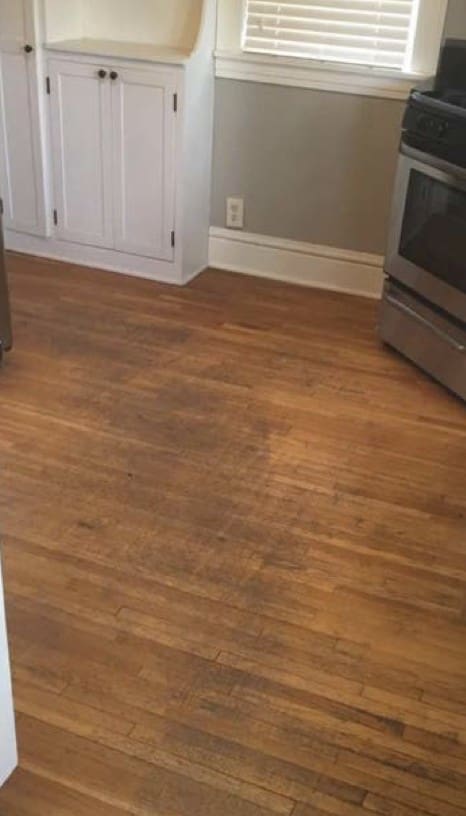

The transformation of an older Blackbutt floor after resanding and coating.
Past stains in floors
There are many things that can stain timber floors and particularly with darker timbers that have been coated with solvent and oil based finishes. Such stains will often be disguised to the point where they are not apparent until the floor is re-sanded and coated. In older dwellings renovations have often taken place with carpets or vinyl floor coverings removed and floors sanded and coated, or at times internal walls have been removed. In addition to this, there can be water staining from past leaks and particularly around nails, or there can also be past pet urine stains. Each of these being disguised until the floor is resanded and coated. Note that if the owner has not seen them then generally nor will the floor sanded have seen them either.
Carpet underlay and rug stains
When a floor has been covered by carpet for many years and is uplifted to sand the floors, carpet underlay can often leave marks in the floor.
As shown in the photo, these marks cannot always be removed completely during refurbishment, and even after sanding the floor back down to bare timber, the stains still might become apparent after the coating has been applied.
Rugs with rubber backings should never be used as these may tend to stain or otherwise affect the applied coatings.
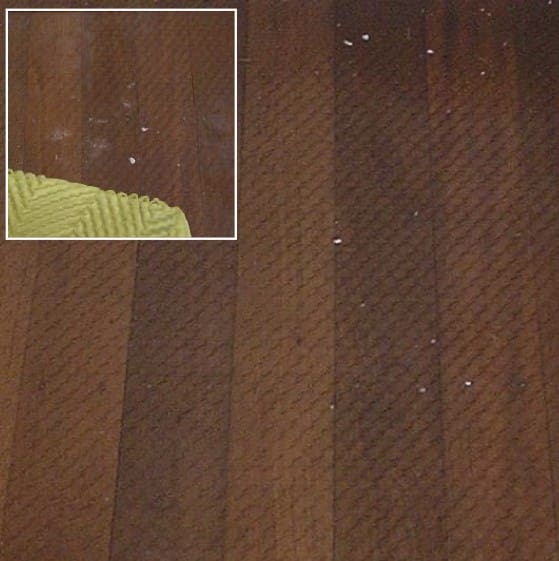
Rubber can penetrate into the timber.
Pet urine staining
The problem with urine, is that it can soak into the floor penetrating in particular water based coatings and not only degrade the coating but also react with tannins in the timber to cause a dark stain that penetrates deeply into the flooring.
Oxalic acid can sometimes be successful in removing tannin related stains but has also at times resulted in a bleaching effect that becomes apparent.
Oxalic acid is present in deck cleaning products and due care is needed with use of such products.
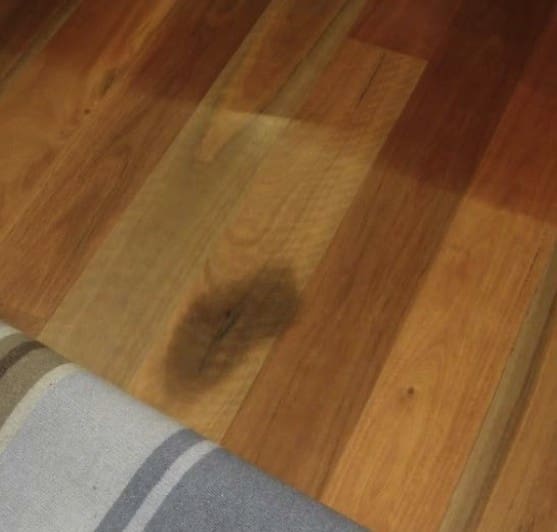
Pet urine stain through a floor rug and note the colour difference under the rug.
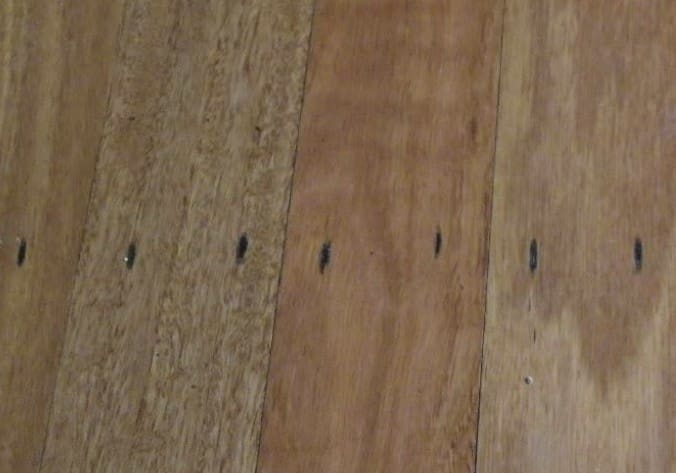
Tannin stain showing around nail heads in a resanded floor.
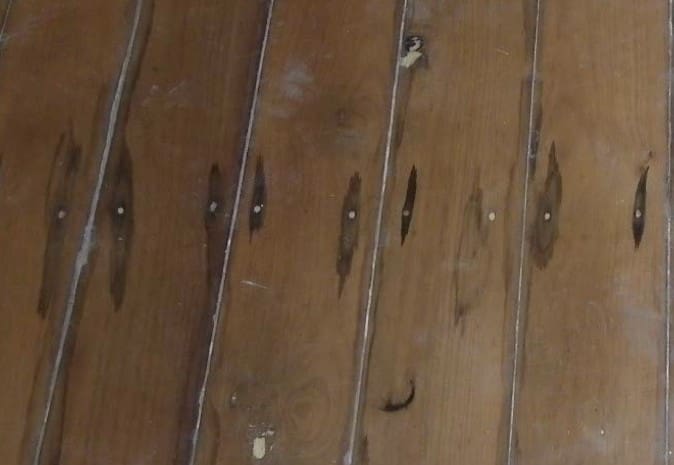
In this old hoop pine floor, the staining is extensive.
Other stains
Provided below are photos of some other stains or colouration differences that are times seen in floors. Many will often be removed with resanding and coating or with a hard wax oil finish, at times further tinted treatment can significantly reduce the impact of food stains, should they occur. If the staining or colour difference is in the coating or at the surface of the boards, then resanding and coating will be effective. However, if the colour difference is to some depth then resanding will not be effective.
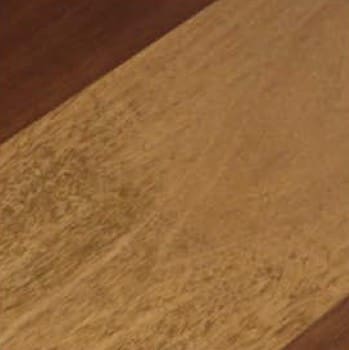
Grain discolouration – water based polyurethane
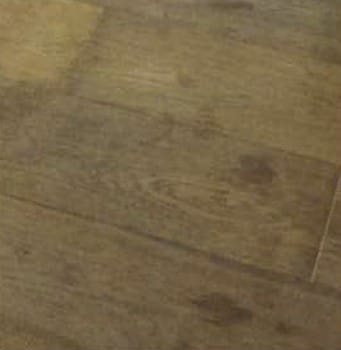
Food stains – hard wax oil
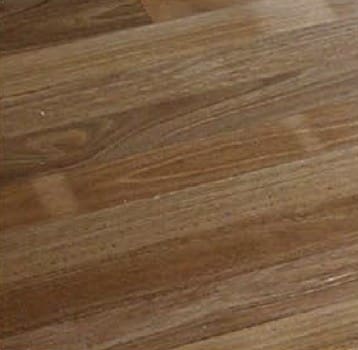
Sticker stain – water based polyurethane
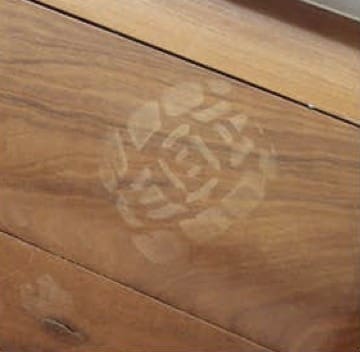
Ghosting – solvent based polyurethane
Approaches that can be taken with floors with stains
It is important to consider that after sanding, the raw timber flooring will be exposed and can be assessed for stains that may be present. The likes of pet urine stains and iron tannate stain have at times had their appearance reduced by using oxalic acid based cleaners, but at times resulting in a bleached appearance in that area. Over punching nails with discolouration and then filling with a colour closer to that of the flooring has also been beneficial in some instances. The use of oil based finishes can disguise stains, including sticker stain, to improve the appearance whereas a water based polyurethane will not disguise the likes of sticker stain. At times coatings have been tinted. A tinted coating will tend to mask the appearance differences in a floor but again this will lessen the crisp appearance of a newly sanded and coated floor. On some occasions it has been requested to attempt to tint a coating to provide more consistency with the colour that the floor was previously, or to more closely match another area of a floor that was not sanded and coated. This is difficult and often not overly successful. It needs to be realised that the flooring contractor did not put the stains in the floor, and they cannot stop the aging effects that occur with coated floors over time. Also, as the saying goes, they cannot make a ‘silk purse out of a sow’s ear’. They can, however, discuss options with owners and what might be achievable, but cannot necessarily guarantee the acceptability of the outcome.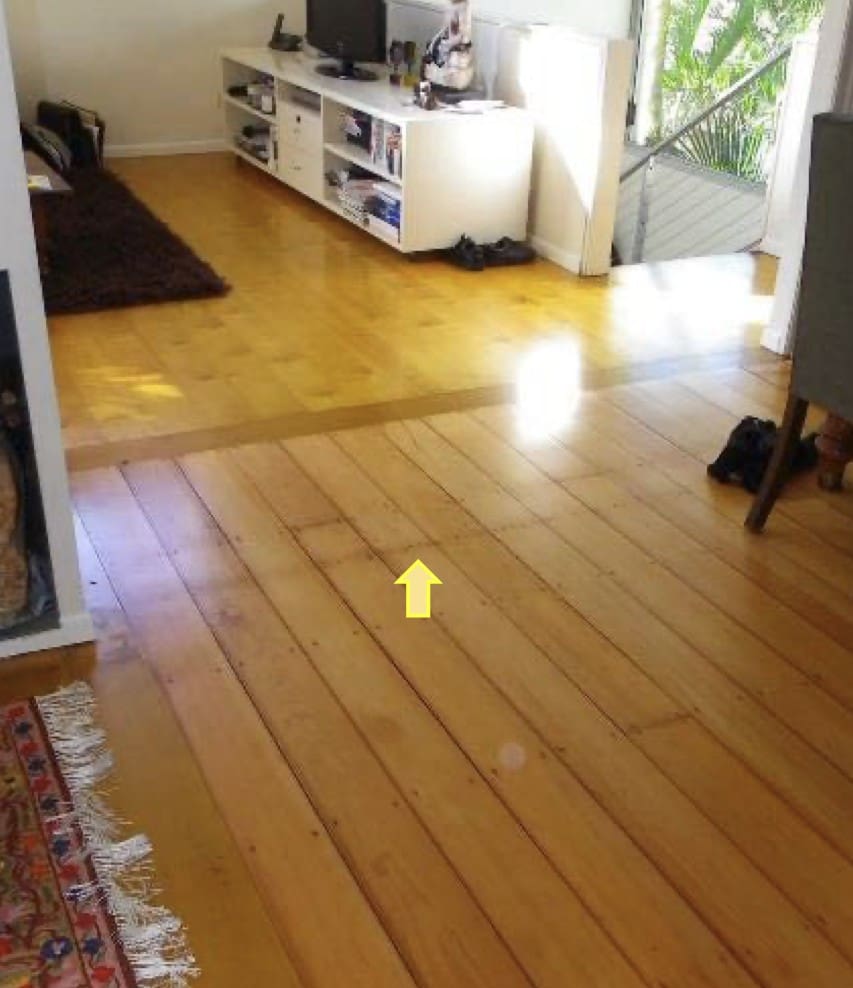
At the top of the photo the floor was not resanded and coated due to the architectural break. The resanded and coated flooring in the lower section of the photo had been tinted in an attempt to match. If it had not been tinted the boards would have looked ‘white’ in colour. Note also the arrow indicating a colour difference where a past internal wall had been present.
